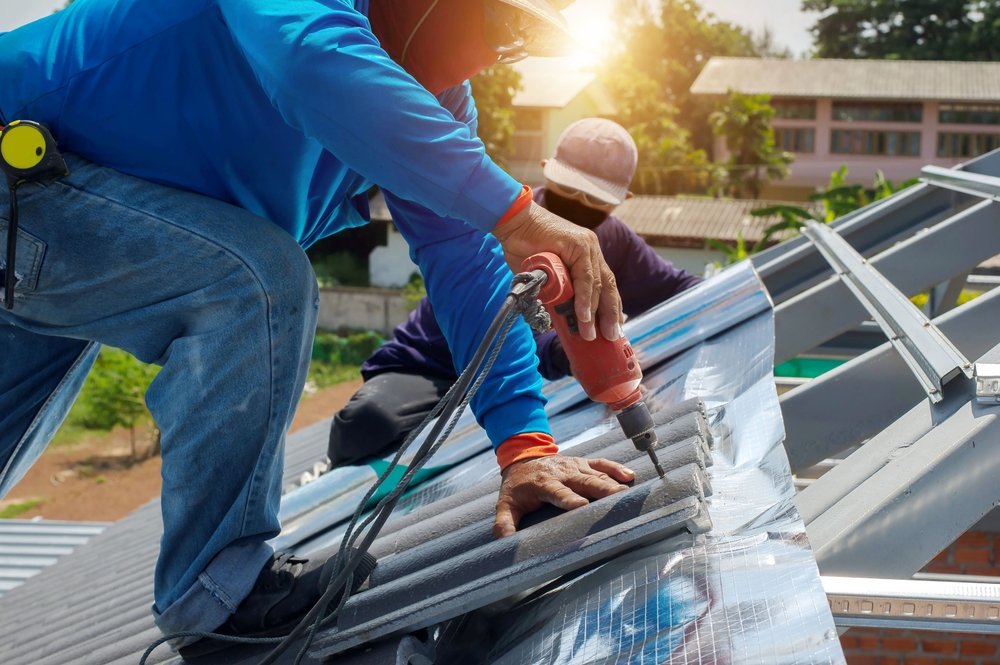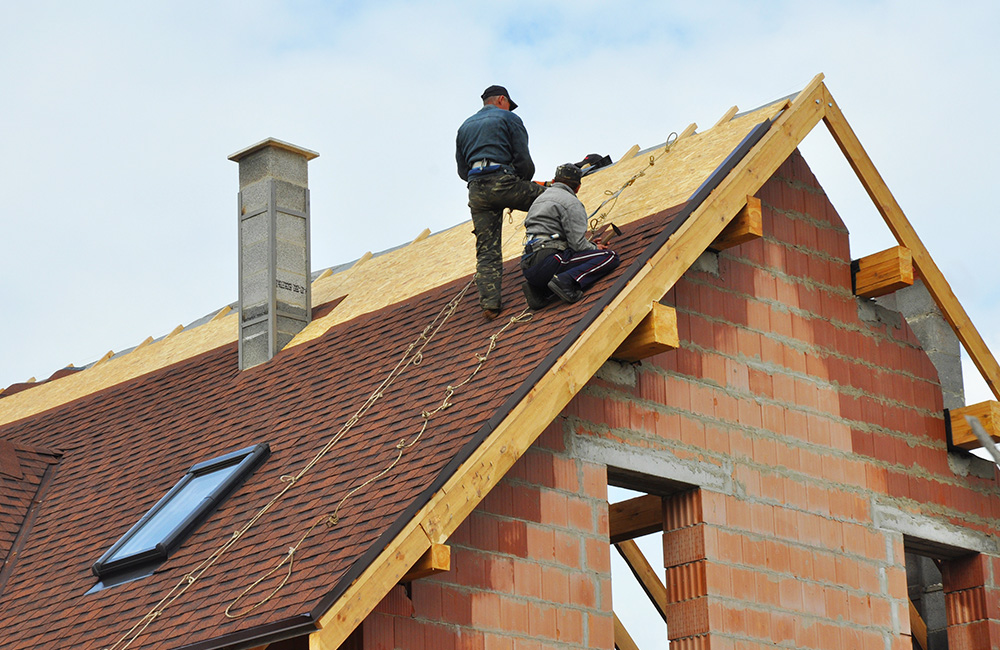Recognizing the Various Sorts Of Roofs: A Comprehensive Overview for Homeowners
With an array of alternatives-- ranging from the traditional gable to the contemporary level-- each type offers one-of-a-kind benefits and difficulties that must align with the house owner's environmental factors to consider and certain needs. As we explore the complexities of numerous roofing types, it ends up being apparent that one dimension does not fit all; the best option may shock you.
Saddleback Roof
Saddleback roofs, defined by their triangular shape, are among one of the most prominent roof styles as a result of their simplicity and performance in shedding water and snow. This layout features 2 sloping sides that meet at a ridge, enabling for reliable drainage and decreasing the danger of water buildup. The high pitch typically associated with gable roofings enhances their ability to manage heavy rainfall, making them suitable for various environments.
Along with their sensible advantages, gable roofings use aesthetic flexibility. They can be adjusted to various architectural styles, from typical to modern homes. The design can also accommodate added attributes such as dormer windows, which boost natural light and ventilation in the attic room area.
In addition, gable roofing systems supply ample space for insulation, adding to energy performance. Home owners can choose from a range of roofing products, including asphalt shingles, steel, and floor tiles, even more boosting customization options.
Regardless of their advantages, saddleback roofs may require added assistance in areas vulnerable to high winds or heavy snowfall. In general, the saddleback roof remains a favored choice as a result of its mix of capability, toughness, and visual allure.
Flat Roofs
Flat roofings are commonly acknowledged for their minimal design and useful applications, specifically in industrial and commercial settings (oahu roofing). These roofing systems feature a virtually horizontal or straight surface area, which enables easy construction and functional room usage. While they might do not have the aesthetic appeal of pitched roof coverings, flat roofs offer many advantages, especially in city environments where maximizing room is essential
Among the main benefits of flat roofs is their accessibility. House owners can utilize the roof covering area for various objectives, such as rooftop yards, balconies, or photovoltaic panel setups. In addition, level roofings are commonly more cost-efficient to set up and keep compared to their sloped equivalents, as they require fewer products and labor.
Typical materials used for flat roofings include built-up roof (BUR), modified asphalt, and single-ply membranes, each offering distinctive advantages. On the whole, flat roofing systems serve as a adaptable and useful option for many property owners and companies alike.
Hip Roofs
Hip roofing systems are characterized by their sloped sides that converge at the top, creating a ridge. This design is distinctive from gable roof coverings, as all four sides of a hip roofing system slope downwards toward the walls, offering a much more stable framework. The angle of the inclines can vary, allowing for adaptability in building visual appeals and performance.
Among the key benefits of hip roofings is their capability to hold up against hefty winds and unfavorable climate condition. The sloped surfaces allow far my response better water drainage, reducing the danger of leakages and water damages. Additionally, hip roof coverings offer increased attic space, which can be made use of for storage or even exchanged habitable locations.
However, constructing a hip roof can be a look here lot more complex and expensive than simpler roofing types, such as saddleback roofs. The additional material and labor included in creating the slopes and ensuring proper structural stability can result in greater costs. Despite these disadvantages, several home owners favor hip roofs for their longevity, aesthetic charm, and capacity for energy effectiveness.
Mansard Roofings
Mansard roofs, commonly identified by their distinct four-sided style, function two inclines on each side, with the reduced incline being steeper than the top. This architectural style, originating from France in the 17th century, is not just aesthetically attractive but functional, as it takes full advantage of the usable room in the upper floors of a structure. The high lower slope permits for even more clearance, making it a suitable option for lofts or attic rooms, which can be exchanged living rooms.
Mansard roof coverings are characterized by their convenience, suiting various architectural styles, from standard to modern-day. They can be constructed with various materials, consisting of asphalt tiles, slate, or metal, providing homeowners with a variety of alternatives to suit their preferences and budget plans. In addition, the layout enables for the integration of dormer windows, improving natural light and air flow in the top degrees.
Nevertheless, it is necessary to think about view website the possible downsides. Mansard roofing systems may call for more maintenance as a result of the complexity of their design, and their steep inclines can be testing for snow and rain drainage. Generally, mansard roof coverings integrate elegance with usefulness, making them a popular option among homeowners looking for distinct architectural functions.
Dropped Roofs
As house owners progressively look for simpleness and functionality in their building designs, lost roofs have become a preferred selection. Identified by a single sloping aircraft, a shed roof covering provides a minimalist visual that complements numerous home designs, from modern to rustic.
Among the primary advantages of a shed roof is its straightforward building, which typically equates to decrease labor and material costs. This design enables effective water drainage, minimizing the risk of leaks and water damage. Furthermore, the upright slope provides sufficient room for skylights, boosting all-natural light within the interior.
Shed roofing systems likewise use versatility in terms of usage. They can be successfully incorporated right into enhancements, garages, or outside structures like sheds and structures. Moreover, this roof style can fit different roofing products, including steel, asphalt tiles, or also environment-friendly roofings, aligning with green initiatives.
Nevertheless, it is vital to think about regional environment problems, as heavy snow tons may necessitate changes to the roof covering's angle or framework. In general, dropped roofs offer a functional and cosmetically pleasing option for home owners wanting to make the most of performance without endangering style.
Conclusion


Gable roofing systems, identified by their triangular form, are amongst the most popular roofing styles due to their simplicity and performance in shedding water and snow. oahu roofing. The high pitch frequently associated with gable roofings improves their ability to handle heavy precipitation, making them ideal for different climates
While they may lack the visual appeal of pitched roofs, flat roofs offer many benefits, particularly in metropolitan environments where maximizing room is crucial.

Comments on “Roofers Oahu: Skilled Specialists for Roof Installations and Repairs”